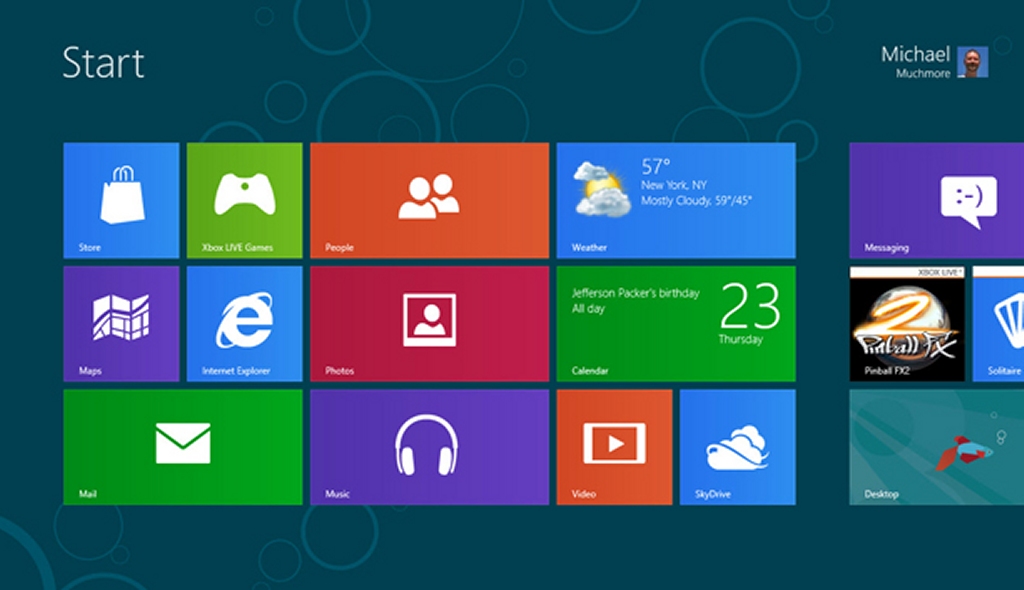Sure enough, the final product should be available for purchase soon. However, we have sources that state the general release is slated sometime late in October.
Yes, we are quite excited about it. But before we use it as our future Operating System, we have to know what it's actually made of.
Windows 8 will feature a new user interface based on Microsoft's Metro design language, similar to that in a Windows Phone. The new interface is also designed to suit touchscreen input, along with traditional mouse and keyboard input. But the release may rule out a few older systems, as we shall explain later.
Firstly, lets see, what the new Windows 8 has in stores for us.
The pros:
1) Internet Explorer 10 will be included as a Metro-style app, which will not support plugins or ActiveX components, but includes a version of Adobe Flash Player that is optimized for touch and low power usage and works only on sites included on a whitelist. The desktop version includes the full version of Flash Player, as well as support for plugins.
2) It is now possible to log into Windows using a Microsoft account. This will allow the user's profile and settings to be synchronized over the Internet and accessible from other computers running Windows 8, as well as integration with SkyDrive.
3) Windows Store has been added for purchasing and downloading Metro (Windows RT-based) apps, as well as advertising desktop apps. Metro apps are installed from the Windows Store, or in the form of a 'Line Of Business' app on devices joined in a network domain.
4) Two new authentication methods have been added: picture password, which allows users to log in by drawing three gestures in different places on a picture, and PIN log in, which allows users to authenticate using a four digit pin.
5) File Explorer will include a ribbon toolbar, and have its file operation progress dialog updated to provide more detailed statistics, the ability to pause file transfers, and improvements in the ability to manage conflicts when copying files.
6) Hybrid Boot will use hibernation technology to allow faster startup times by saving the Windows core's memory to the hard disk and reloading it upon boot.
7) Windows To Go will allow Windows 8 Enterprise to boot and run from a bootable USB device (such as a flash drive).
8) Two new recovery functions are included, Refresh and Reset. Refresh restores all Windows files to their original state while keeping settings, files, and Metro-style apps, while reset takes the computer back to factory default condition.
9) USB 3.0 is now supported natively.
10) A new lock screen displays a clock and notifications while the computer is locked.
11) Task Manager has been redesigned.
12) Xbox Live integration (including Xbox Live Arcade, Xbox Companion and Xbox Music)
13) Storage Spaces will allow users to combine different sized hard disks into virtual drives and specify mirroring, parity, or no redundancy on a folder-by-folder basis.
14) Family Safety will allow parents to protect their children on the Internet, as well as monitor and control their PC and Internet activities and usage.
15) Windows Defender now has anti-virus capabilities, similar to those of Microsoft Security Essentials. It is intended to replace the Security Essentials package and function as the default anti-virus program.
The cons:
1) The Start button has been removed, although it is still accessible as a hotspot in the lower left corner of the screen, and on the charms menu. A new start screen now takes center-stage.
2) The Aero Glass theme which has been featured in Windows Vista and Windows 7 has been removed from Windows 8 in favor of a Metro-style theme.
3) The Microsoft Gadgets which has been featured in Windows Vista and Windows 7 has been removed from Windows 8.
4) The new OS, may not be supported on older and low-spec hardwares, so the only option to get Windows 8 for low-end PC users will be a full-scale upgrade. Oh, and the smartphone-ish look doesn't help the cause too.
(To be frank, they have removed the basic features we love and use on a day-to-day basis)
Hardware requirements:
| ARCHITECTURE | X86 (32-bit) | X86-64 (64-bit) | |
| Processor | 1 GHz (with PAE, NX and SSE2 support) | | |
| RAM (Memory) | 1 GB | 2GB | |
| Graphics Card | DirectX 9 graphics device with WDDM 1.0 or higher driver | | |
| Storage | 16 GB | 20 GB | |
The bottom line, is that, Windows 8 is a new OS, and the learning curve will be quite steep. Yes, it does have a host of new and improved features as stated above, and we will have to get rid of the much loved 'Aero Glass theme' images from our minds. But if this is the future of Microsoft, then we accept it with both hands. Just like how we supported the 8's predecessors.
- ALVIN EMMANUEL THOMAS
With references from Wikipedia

 RSS Feed
RSS Feed

